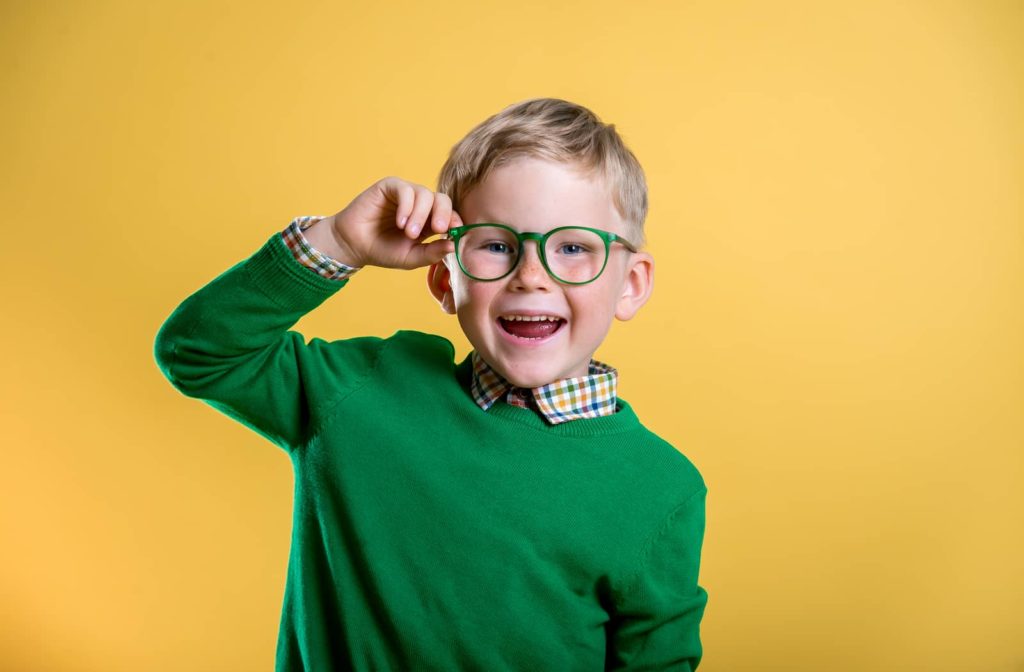If you had to guess how many Canadians are living with myopia, what percentage would you come up with? 10%? 15%?
Currently, about 30% of Canadians have myopia, and studies suggest that number will rise. By 2050, experts believe over half of the entire world population will develop at least some degree of myopia.
So if you’re amongst this growing population, a question you may be asking yourself (or your optometrist) is what would be better for controlling your symptoms: glasses and contact lenses? Today, we’re going to take a look at these two common options for controlling myopia so you can visit your optometrist with the information you need to make the decision that’s right for you!
Myopia & Myopia Control
Before we can start taking a look at which option might be best for controlling myopia, we have to understand what myopia is and what myopia control means.
What is Myopia?
Myopia, or nearsightedness, is a common eye condition that affects your eye’s ability to see objects at a distance but not up close. Myopia occurs when the shape of your eye becomes elongated, which in turn affects how light refracts onto your retina. With a longer eye shape, light focuses in front of your retina instead of on it, blurring your distant vision.
Myopia can start at a young age and, if left uncorrected, can worsen as you grow older.
What is Myopia Control?
There are a variety of ways to manage how myopia progresses, but they all have the same objective: to control how much your eye elongates over time.
Some of the most common tools in myopia control include specialty contact lenses and glasses. Depending on what’s right for your eyes, your optometrist may recommend either. But, which tool has a better track record?
Why Choose Glasses?
Glasses are widely used for vision correction around the world and can help with all kinds of refractive errors, including presbyopia, hyperopia, and (you guessed it) myopia.
However, what type of lenses are best for controlling myopia? At Advance Eye Care, we generally recommend using 2 specific brands of multifocal eyeglasses: Myovision and Myopilux.
What Do These Lenses Do?
Multifocals are a type of lens that helps correct refractive errors at all distances using multiple prescriptions. Multifocal lenses usually help patients with presbyopia, but some studies have shown them to help slow the progression of myopia in children by 51% when compared to children who are only using regular lenses.
The 2 brands of multifocal lenses we recommended, Myovision and Myopilux, are designed with multiple prescriptions specifically to help control myopia development in children.
While using regular lenses, your eyes may start to elongate to help try to correct your near vision. Myovision and Myopilux lenses help project images into the center of your retina, as well as reduce the strain on your near vision to help prevent elongation and control myopia.

Why Choose Contact Lenses?
Contact lenses can provide a variety of benefits for people dealing with myopia.
While regular contact lenses can help correct your vision, they may do little when trying to control myopia progression. Specialty contact lenses like multifocal contacts or MiSight contacts can help you or your children slow the progression of myopia.
How Can Contact Lenses Help Slow Myopia?
Multifocal contact lenses work the same way as multifocal eyeglass lenses. By using 2 prescriptions, multifocal contacts can clear your distance vision while also preventing the progression that may occur when using traditional single-prescription contact lenses.
MiSight 1-day contact lenses are another form of multifocal contact lenses used specifically to help children experiencing myopia. Some studies have shown that MiSight contact lenses can help reduce myopia progression by 59% and axial elongation by 52% when compared to children using single-prescription contact lenses.




